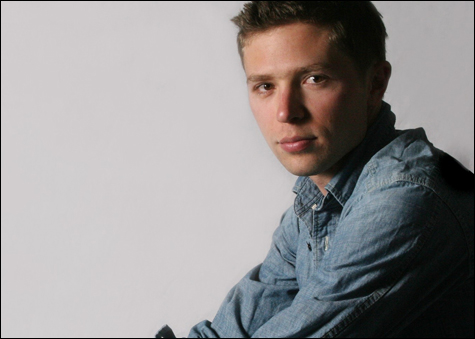
Jonah Lehrer |
| Proust Was a Neuroscientist by Jonah Lehrer | 242 pages | Houghton Mifflin | $24 |
Are Jay-Z’s synapses wired to express supreme confidence? Can the rise and fall of Britney Spears provide evidence of how our brain reacts to nonsense?These are just a couple of questions one hopes Jonah Lehrer might answer in the sequel to his first book, Proust Was a Neuroscientist. Lehrer is a Concord, New Hampshire, resident and editor-at-large at Seed (motto: “Science is Culture”), a monthly magazine that discusses cutting-edge science in layman’s terms; likewise, this book of essays traces recent developments in neuroscience back to some of the world’s greatest artists.
Spending a chapter on each of eight artists, Lehrer argues that science is just now proving ideas millions have been absorbing through the arts for centuries. Proust’s literary examinations of human memory, Gertrude Stein’s (ultimately futile) attempts to transform how the mind processes language, and Cezanne’s abstract-yet-recognizable postimpressionist paintings were all innovative modes of expression, resisted and decried by scientists and society upon conception. Neuroscience is just now proving that these artists wrote and painted like our bodies think and see.
Adding a compelling backdrop to Lehrer’s low-key prose (considering the content he’s tackling here — how about that corticofugal system? — this is a blessing) are anecdotes that portray how difficult it is for both science and society to accept the new. A chapter on the composer Igor Stravinsky is particularly enlightening: debuting the ballet The Rite of Spring, Stravinsky’s noise — instead of using dissonant notes, he combined two sets of consonant notes, creating a new and overwhelming sound — prompted a literal riot in the audience.
Lehrer has great fun with the incident (“The melee incensed Stravinsky. His art was being destroyed by an idiotic public.”), and goes on to explain that much of the brain’s auditory process is based on expectation, which helps explain the “kids these days” ranting by generations of parents.
The book is at its best when Lehrer addresses a specific subject and stays on top of it. A couple of early chapters are unpersuasive because they focus on sensations that are hard to quantify. The entry on “feeling,” focusing on Walt Whitman’s Leaves of Grass, takes an earnest approach to the writer’s wealth of empathy when clinical prose could have dissected it more smoothly. Sections on taste (Auguste Escoffier, the original gastronomist) and memory (Marcel Proust, expressing “how time mutates memory” in an elegant chapter) fare better, because the chronology of those sciences can be traced more coherently.
Lehrer’s inquisitions build upon each other, though, creating the cumulative effect of a crash course in modern genetics. It’s tough to overstate how well Lehrer synthesizes such a glut of complex information; each chapter is neatly structured, allowing for easy skimming between the art and the science of each subject.
Moreover, it becomes fun to imagine your favorite neglected artist’s reputation strengthened by cognitive scientific evidence, and to consider what other historical figures can claim the prescience these do (Lehrer told me pieces on Edgar Allan Poe and Samuel Taylor Coleridge were written but ultimately left out).
In a coda to finish the book, Lehrer does make one modern connection between the arts and sciences. Using Ian McEwan’s novel Saturday as an exemplar (its main character is a neuroscientist, and McEwan researched the field exhaustively), Lehrer calls for a renewed mutual quest for understanding between the sciences and the arts, and its expression within literary fiction. He argues that only this pluralism can bring science to vivid life, and while it would be better if he incorporated this argument into the body of the book, it’s safe to assume we’ll be hearing more from the 25-year-old Lehrer on the topic.
Christopher Gray can be reached at cgray[a]phx.com.